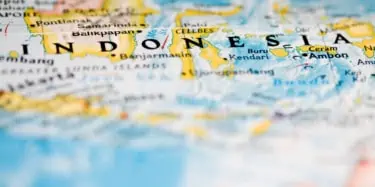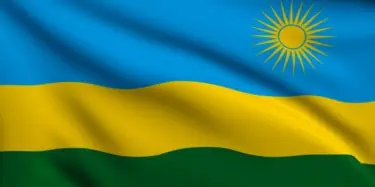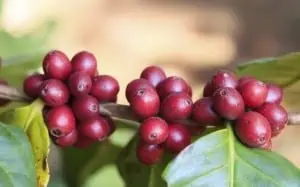In beverage-world terms, coffees from Indonesia and East Timor could be considered the single-malt whiskies of coffee. Generally absent are the tart fruit and sweet floral notes of the finest pure, high-grown, wet-processed coffees of Latin America and East Africa. In their place are rich, ambiguous notes of nut, aromatic wood, sometimes earth, sometimes a chocolaty fermented fruit. Most of these
Fourteen Covers of a Classic Tune: Mocha Java Blends
Around 1740 Europeans had a rather limited menu of coffees to choose from: Mocha, the world's original commercial coffee from what is now Yemen, and Java, a recent introduction by the Dutch from their colony in the Pacific. Inevitably, these two coffees came together to form the world's first blend. In the years following, other, now more famous, coffees from Latin America began to fill out
Best (or Should-Be-Best) Selling Single Origins 2009
With this month's review we aimed to evaluate those single-origin coffees that sell best all year. We were after the sturdy, consistent coffees that make up the backbone of roasters' single-origin programs, the coffees they absolutely need to have in bags or bins to avoid muttering customers or nasty emails. We hoped to bypass for now the precious and the extraordinary, the tiny lots flown in by
Quality and Fair Trade Certified Coffees
Fair Trade certification has been on a bit of roll of late, steadily expanding both at origin and in the marketplace. Its producer programs have extended from their original base in Central America to more far-flung origins like Ethiopia and Sumatra. Fair Trade certified coffees are now sold in volume in at least one big box store, Sam's Club, and show up in smaller quantities at Target.
CQI Takes on the Robusta Taboo
Recently arrived in the mail is a certificate (suitable for framing) from the Coffee Quality Institute, the non-profit coffee research organization spun off from the better known Specialty Coffee Association of America. That I earned the certificate through some cupping in Uganda is not of much note; of late the American specialty coffee industry has been passing out certificates like cookies to
Something for Everyone: India Coffees 2009
India is a considerably better-known coffee origin in Europe than in the United States. And even in Europe it tends to be a source whose profound coffee originality is hidden inside blends rather than foregrounded in single-origin or trophy coffees. For example, India provides some of the world's most valuable coffee types for espresso blends, yet these same exotic coffee types are seldom offered
Half Way to Napa? Panamas 2009
The compact coffee growing region of western Panama, rising on the slopes of the 11,300-foot Volcan Baru, is in many respects ideally configured to develop into one of the world's coffee versions of Napa Valley. The region is compact, ideal for coffee growing, and almost all of the production is performed by classic medium-sized, family-owned farms of the kind that best equate with the wine idea
The Devil’s in the Details: Bird-Friendly and Shade-Grown Coffees
Suppose the following: You look out your window and see a suddenly appearing flock of song birds. Or perhaps you hear their familiar, melodic burbling first, then see them. For many of us this is a precious moment, particularly so because we often know that these flitting, vulnerable creatures are only making a brief stopover before moving on until (hopefully) making a return next year. Those who
Botany and the Cup: The Bourbon Conundrum
We know that the species of the tree that produces our coffee profoundly influences how it tastes. And we know to the point of cliche that the arabica species produces all of the world's finest coffees. But what about the various botanical varieties of arabica, the coffee equivalents of wine grape varieties like the Cabernets, Chardonnays, Zinfandels, etc. that figure so prominently in the
Animal-Processed Coffees: The Latest Contender
A favorite question asked by bored party-goers when meeting a coffee cupper for the first time runs like this: "Is it true that there is a coffee that is... uh... eaten by, and, uh ... " "Yes," we respond. "Kopi luwak. The coffee fruit is eaten by an animal and the coffee seeds are excreted (or depending on the crowd, a less Latinate term) collected, dried and sold as the world's most expensive
Alternative Africas: Rwanda, Burundi, Tanzania
Coffees from the mountain ranges and plateaus that parallel the east coast of Africa are among the most distinctive in the world. The great coffees of Ethiopia and Kenya are by far the best known, but other African countries also produce distinguished Arabicas. For this month's article we review twelve coffees, six from Rwanda, four from Burundi, and two from Tanzania. Rwanda and Burundi
McDonald’s vs. Starbucks: A Milky Skirmish in the Coffee Wars
The latest front in what the business press likes to call the Coffee Wars is clearly more a battle about frothed milk, whipped cream and syrup than about coffee. McDonald's is rolling out its McCafé line of espresso-based (OK, milk-based) beverages with a national advertising assault of old-fashioned scale and intensity, while Starbucks, the Chain that Brought the Caffè Latte to Main Street (plus
American Espresso Blends: Boutique and Bigger
Specialty espresso is currently in the throes of a creative explosion. I think of it as "post-Italian" espresso, a dynamic community of baristas, blender/roasters and motivated aficionados remaking espresso as a global connoisseur's beverage with passionately contested barista competitions, non-traditional brewing innovations, and freshly conceived blend designs. The goal of this month's
Espresso: Tasting Super-Heroes
I have spent plenty of hours with a cupping spoon in my left hand. This is my first "official" espresso tasting (American Espresso Blends: Boutique and Bigger, Coffee Review, May 2009). Each espresso we tasted was expertly pulled under the exact same parameters: 18g dose, 28 sec, 2 oz double split into 2 one-oz singles, through Nuova Simonelli competition double-baskets. All shots were pulled on
Papua New Guinea: Promise Only Partly Fulfilled
Three or four years ago I was looking out the window of a small airplane banking into a short (very short) grass airstrip serving a coffee-growing village of Papua New Guinea. Everything that makes the highlands of Papua New Guinea one of the most promising coffee growing regions in the world was spread out beneath me. Among all of the coffee terroirs of the world, the lush highland valleys of
San Francisco Bay Area Coffees: Dark and Beyond
Sorry, Seattle and all of those other places, but the American specialty coffee movement started in the San Francisco Bay Area. Of course small artisan coffee roasting companies were long in business before Alfred Peet opened his famous Vine Street store in Berkeley in 1966. Small, roaster-in-the-back-of-the-store coffee companies surviving from the early part of the 20th century doubtless helped
House Blends: Comfort Coffee and Beyond
House blend is a slippery term in coffee. It can suggest the straightforward and reliable, as in "house wine," and it can mean something unusual but local, not to be had elsewhere, as in "only at our house." Plus over the last decade it has taken on still another meaning. You find this last definition operative in the mid-market world of Starbucks and similar upscalish supermarket coffees. Here
Convenience First: Espresso Pods and Capsules
It is no surprise that over the last decade the more moneyed elements of the coffee industry have been trying to figure out how to simplify espresso brewing to the point that a consumer can produce a properly rich, smooth-tasting espresso shot without struggling through a complicated process that can be as daunting as upgrading to Vista or assembling a glass-fronted display case from Ikea. Given
Holiday Gift Coffees 2008: The Rare, the Exceptional, the Weird
Just to be clear, this is not a "10 best coffees of the year" article (or 50 best, or 150, or whatever number of bests an editor intends to dazzle us with). We've reported on many superb coffees over the past year, but by now most of them are a memory. We concentrated on coffees that can be bought now and enjoyed close to their peak in flavor and freshness. Our goal was to turn up coffees that
Unassuming Beauty: Coffees of El Salvador and Honduras
Leaders of El Salvador's growing specialty coffee sector are quick to point out what they feel are the particular strengths of their origin. First, large plantings of coffee varieties particularly respected for their flavor and character, and second, generally impeccable preparation of those varieties. This month's cupping of nearly thirty El Salvador coffees from twenty-two American specialty





























